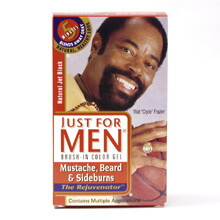BY JEFF JORDAN
When new media technologies start out, their programming tends to be aimed at the mass market. It’s only when these technologies mature and their audiences grow that it becomes feasible to go beyond general interests and target segments of the audience with specialized content or commerce.
This evolution happened in the magazine industry, which exploded in the 1920s with new general-interest magazines like Reader’s Digest and Time but later targeted more specific interests with magazines like Jet, Sports Illustrated, and WIRED. This evolution also happened in television: As new technologies like UHF, cable, and then satellite emerged, programmers responded by developing channels like BET, Nickelodeon, and Zee TV targeted at specific segments of the population. Similarly, on the Internet, the early winners were “portals” that carried a broad range of programming. Next came e-commerce companies like Amazon and eBay that could address a long tail of interests—and now we’re seeing ever-more-targeted e-commerce companies such as Zulily, Warby Parker, and Julep.
What’s happening throughout all of these examples is a shift from broadcasting to “narrowcasting”, a term first coined by computing pioneer J.C.R. Licklider in 1967 about the “multiplicity of television networks aimed at serving the needs of smaller, specialized audiences”. Today, the Internet (and social media) enables us to target these segments more precisely. There’s an important nuance here, however: This targeting is not about narrowing per se, but about reaching and including segments that weren’t addressed before.
That’s why our newest investment is e-commerce company Walker & Company, which was founded by Tristan Walker to build a modern personal care brand for people of color. Globally, this is not a narrow audience given that a giant percentage of the world’s populations are people of color. But we believe Tristan is on to a big idea, because in the U.S., this segment appears woefully underserved—even though it is growing.
Brands catering to this segment are badly dated, and customer needs aren’t being met
I’m a huge basketball fan, and one of my favorite players when I was a kid was Walter “Clyde” Frazier in spite of the fact that he played for the hated Knicks (I grew up in Philadelphia and Washington, D.C.). Clyde epitomized cool, and he helped lead the Knicks to NBA championships in 1970 and 1973.
No offense to Clyde, but I think it’s a symbol of how neglected these markets are that one of the leading selling brands in the category hasn’t updated its spokesperson or its packaging in multiple decades…
People of color also have specialized personal care needs that are often not served by the global CPG (consumer packaged goods) brands.
For example, 80% of black and Afro-Latino men—and 30% of other races—suffer from Pseudofolliculitis Barbae (PFB) or “barber’s itch” due to curly hair follicles. The resulting razor bumps are not only annoying, but also can be unsightly and painful. Current leading selling shaving products tend to exacerbate this condition.
The market is large and growing
The population of people of color is growing in the U.S. and “over-indexes” significantly on beauty and personal care CPG products. For example, black consumers spend 2x the general population on cosmetics and 1.8x on skincare (Essence Communications, Inc.). And black women represent approximately 7% of the population but 30% of hair care spend.
We believe Walker & Company is extremely well positioned to build a big business catering to this market:
— Their first product, the Bevel shaving system for men (which they designed and manufactured), is impressively designed and executed — but more importantly it works. Clinical tests show that shaving with Bevel reduces razor bumps among men of color. More importantly, customers perceive that difference too: “Last razor I used had my face looking like nestle crunch. Been using @Bevel for some days now and my face still feels like a baby’s bottom”. “You guys did it! The first shaving system I’ve used that actually works as advertised. I will be a life long customer… Thank you…”
— The Internet enables efficient marketing to previously difficult-to-reach segments, and Tristan is quite adept at social marketing. He was the first business development person at Foursquare, and personally has 280,000 Twitter followers. Walker & Company takes customer satisfaction and feedback so seriously that he and his employees personally reply to and engage with every customer on Twitter.
— Results are early, but Bevel is off to a great start. They have gone to market with a five-part shaving system sold through a subscription format—and sales as well as customer retention have been strong out of the gate.
— There are numerous other huge segments in this market with under-served needs, and Tristan already has an extensive product roadmap for adjacent markets.
Yet it’s important to note that Tristan’s mission goes beyond profits. For the consumer, it’s hard to feel like a first-class citizen when you’re only able to buy second-class products. That’s why Walker & Company focuses on developing brands that solve acute physical problems (beginning with PFB) in the community—they won’t be making shampoo just to make shampoo.
Tristan feels he has found his life’s work at Walker & Company, and he is hell-bent on building the modern health and beauty brand for people of color. We’ve known Tristan for years, and consider him to be a charismatic, talented, and passionate leader. We look forward to joining him on this journey.



